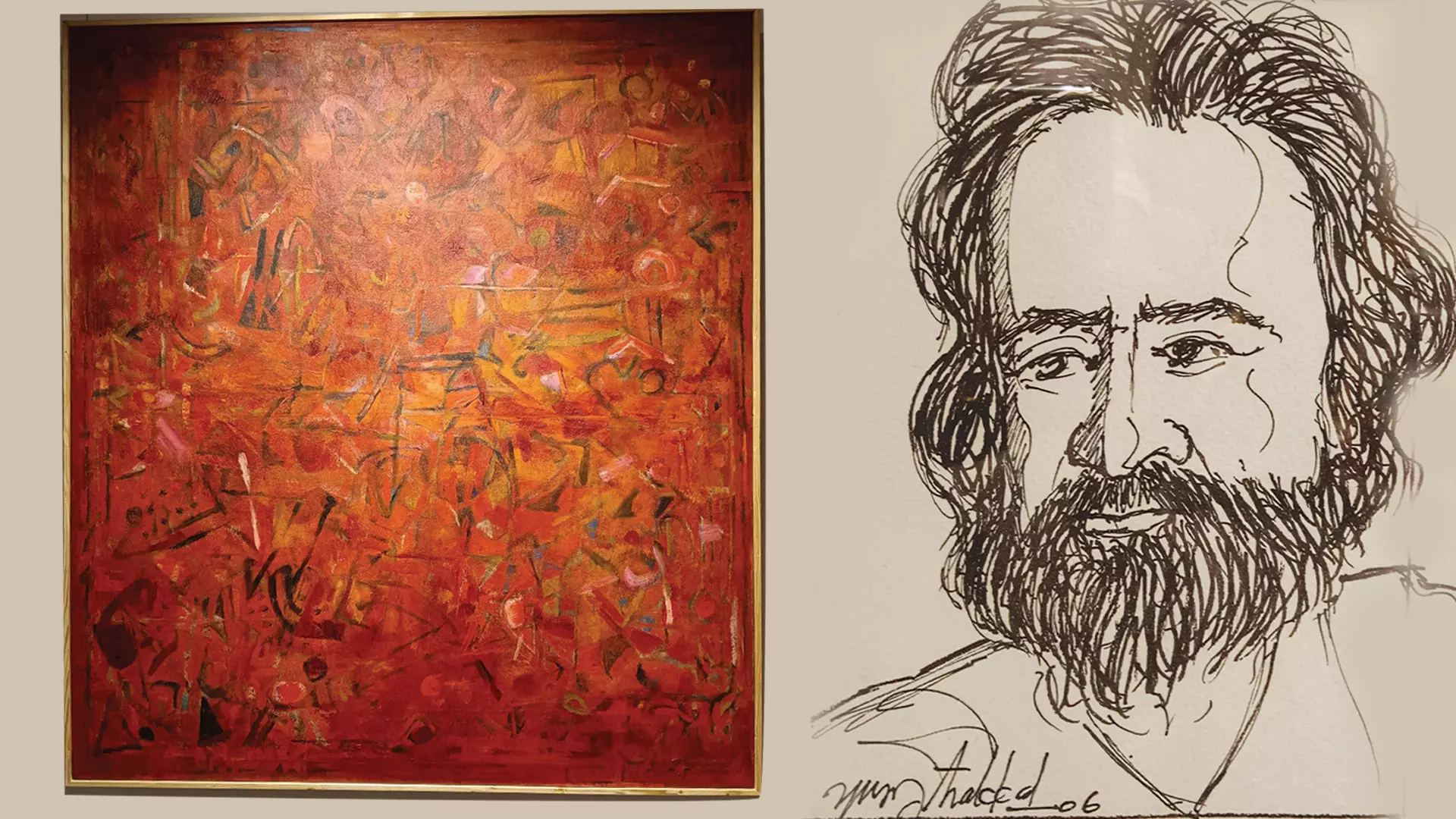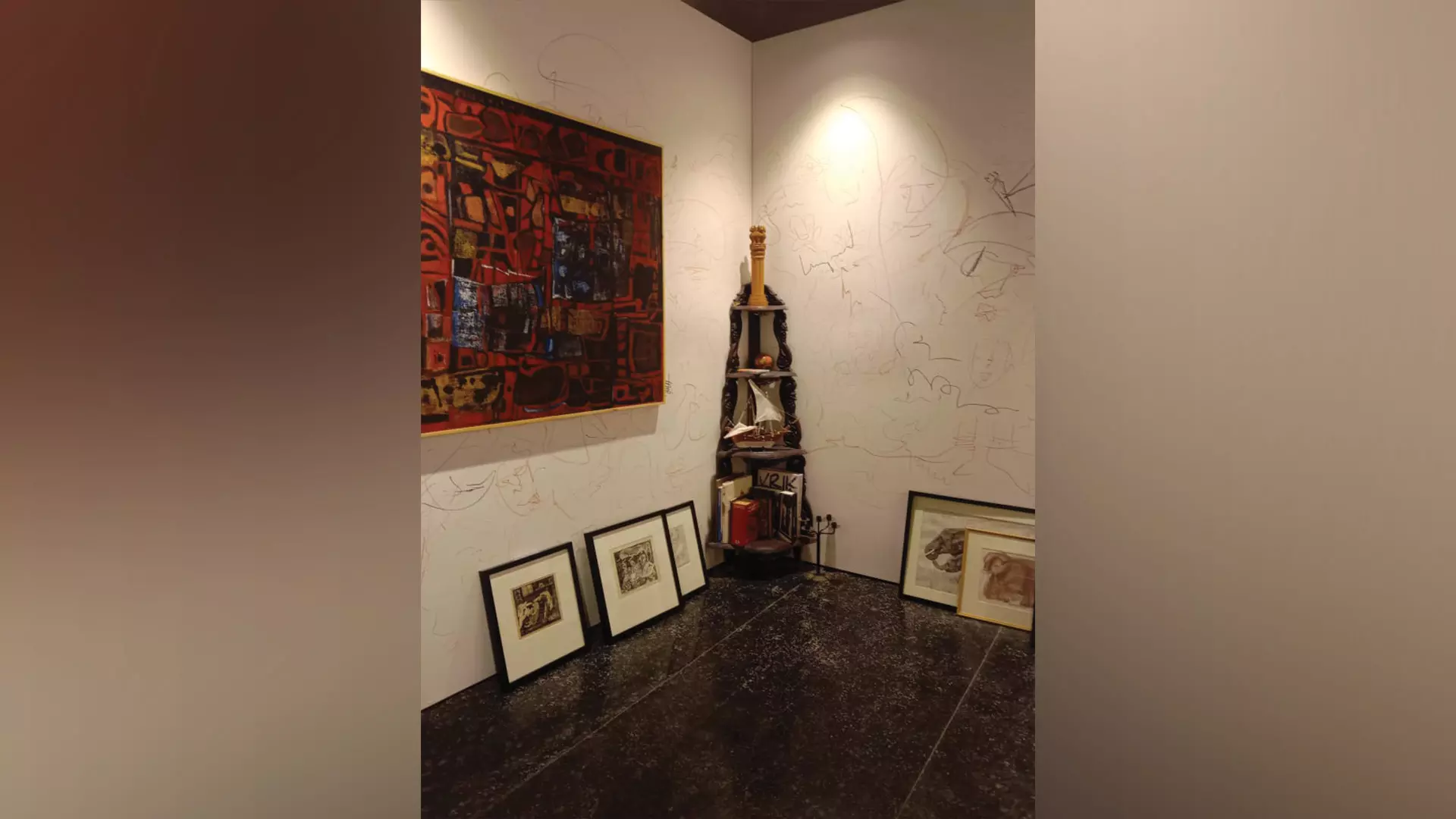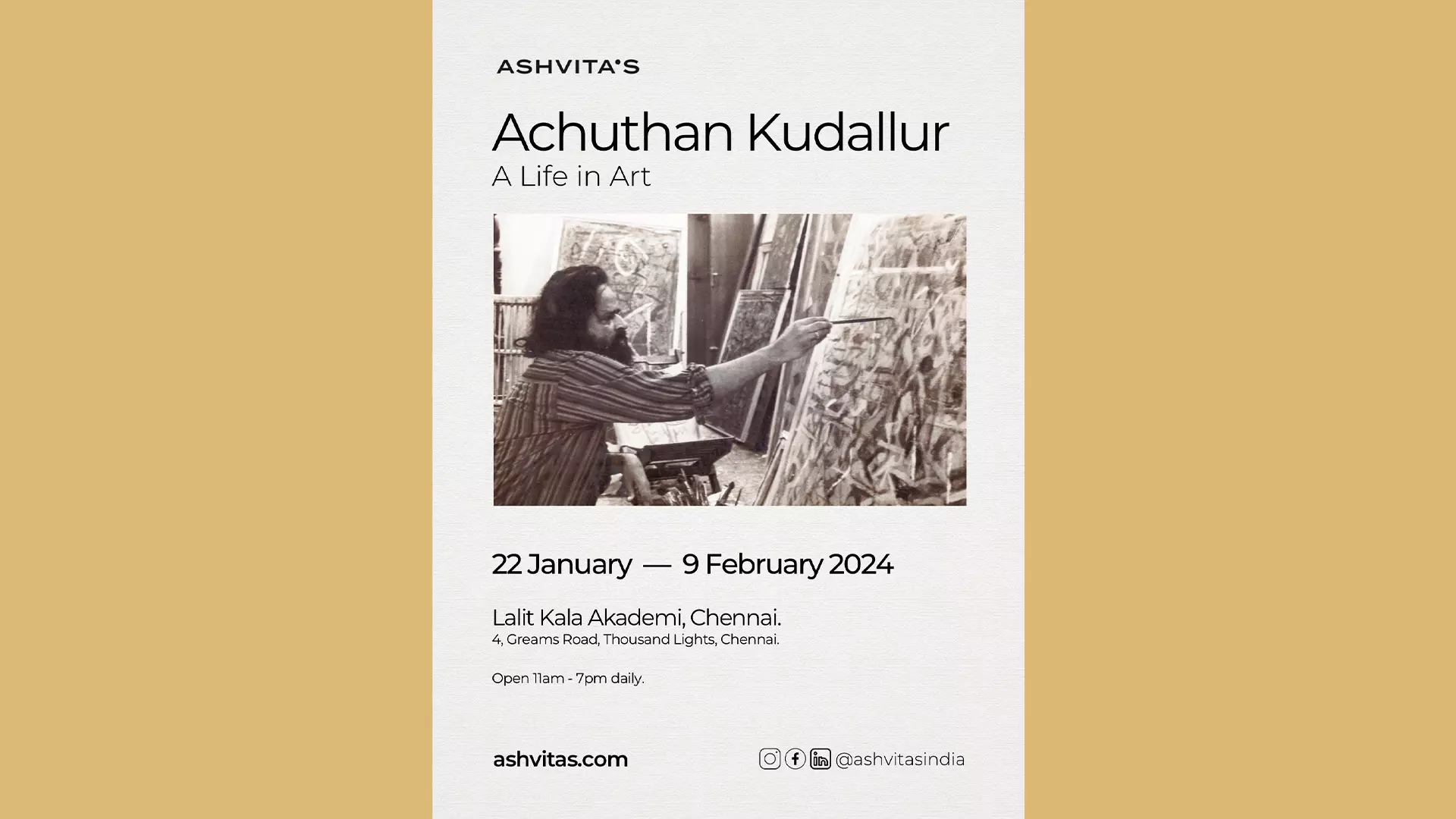
- Home
- India
- World
- Premium
- THE FEDERAL SPECIAL
- Analysis
- States
- Perspective
- Videos
- Sports
- Education
- Entertainment
- Elections
- Features
- Health
- Business
- Series
- In memoriam: Sheikh Mujibur Rahman
- Bishnoi's Men
- NEET TANGLE
- Economy Series
- Earth Day
- Kashmir’s Frozen Turbulence
- India@75
- The legend of Ramjanmabhoomi
- Liberalisation@30
- How to tame a dragon
- Celebrating biodiversity
- Farm Matters
- 50 days of solitude
- Bringing Migrants Home
- Budget 2020
- Jharkhand Votes
- The Federal Investigates
- The Federal Impact
- Vanishing Sand
- Gandhi @ 150
- Andhra Today
- Field report
- Operation Gulmarg
- Pandemic @1 Mn in India
- The Federal Year-End
- The Zero Year
- Science
- Brand studio
- Newsletter
- Elections 2024
- Events
- Home
- IndiaIndia
- World
- Analysis
- StatesStates
- PerspectivePerspective
- VideosVideos
- Sports
- Education
- Entertainment
- ElectionsElections
- Features
- Health
- BusinessBusiness
- Premium
- Loading...
Premium - Events

When renowned Indian abstract painter Achuthan Kudallur died on July 18, 2022, the Kerala-born bachelor-artist left behind more than 100 paintings and many unfinished canvases at his apartment in Chennai’s Thiruvanmiyur and his studio in Injambakkam.Besides paintings, there were books, curios and other articles in his personal collection. The artist who came to live in Chennai from...
When renowned Indian abstract painter Achuthan Kudallur died on July 18, 2022, the Kerala-born bachelor-artist left behind more than 100 paintings and many unfinished canvases at his apartment in Chennai’s Thiruvanmiyur and his studio in Injambakkam.
Besides paintings, there were books, curios and other articles in his personal collection. The artist who came to live in Chennai from Kerala’s Kudallur in the late 1960s never returned to his scenic native village situated on the banks of Bharathapuzha (also called Nila) in Palakkad. Being a witness to many social and cultural changes in the five decades that he lived in Chennai, Achuthan never restricted himself to art galleries and studios alone.
He was a keen observer of the happenings around him in the city, whether it was a concert, dance fest or a book launch. Besides artists, he maintained a good relationship with writers, filmmakers and journalists. One day, veteran Indian filmmaker John Abraham (1937-1987) jumped out of a bus after seeing Achuthan walking through the road. The avant garde filmmaker was carrying a script of a movie that he was going to direct. “He (John) was wearing a green ‘kurta’ and he wanted me to read it,” Achuthan once said. And it was through these kinds of interactions with writers, filmmakers and laymen that he redefined his life.
Even though his apartment and studio had a large collection of his paintings, many were clueless about them after his sudden demise. Those who were close to Achuthan said the artist’s nephews — who are the legal heirs of his assets — sold the entire collection of paintings to a gallery. But they didn’t know which gallery? It has been more than a year and a half since the artist breathed his last, Ashvita’s, a Chennai-based fine art gallery, has come up with the paintings and other collections of Achuthan in an exhibition.

Achuthan Kudallur's works.
The exhibition, ‘Achuthan Kudallur: A Life in Art’, sums up the artist’s journey from his early days to the later years when he painted the abstracts that he is remembered for. The gallery has also displayed the books, curios and other materials, including the artist’s wrist watches, Canon SLR camera, as part of the exhibition, which is on at the Lalit Kala Akademi, Chennai.
Even though Achuthan maintained a good relationship with many, he seldom invited people to his house and studio. Only a few were able to visit both the places. Why? Achuthan liked solitude. He was rich enough to buy expensive cars, but he maintained only a smaller one. He never drove his car and whenever he wanted to use the car, he would hire a driver. He didn’t want to keep a driver permanently because the presence of a driver waiting for him disturbed his consciousness. “I can’t paint when someone (driver) waits for me downstairs,” he would say. His apartment and studio were always in a mess, with paintings, canvases, books and other materials that he collected. But the artist was very possessive about his works and he rarely gifted anyone his paintings.
“Even though his house was in a mess, he knew about each and everything inside it. He knew where he kept even the tiny tubes of oil or acrylic paints. He was very possessive about the things inside his house and studio, a reason why Achuthan rarely gifted his paintings to anyone,” says Gita Hudson, an artist who maintained a great friendship with Achuthan. “Despite having more than 20 years of association, Achuthan gave me only a small painting of him. He rarely gifted people his paintings and was very possessive. At the same time, he was generous. He had helped (financially) many during their difficult times,” she added.
The turning point in the engineer-turned artist’s life took place during the time that he spent at the Madras Arts Club (1972-76) while working at the Public Works Department. There was no initial recognition to his figurative works, but he soon established a world of his own by redefining his strong sense of colour and space through his abstract works. The money that he earned while working at the Public Works Department helped him strengthen his career as an artist. He produced a huge collection of works in the medium that he himself called ‘abstract’. He had no faith in the so-called theories though. “My kind of abstraction does not report from nature. It has an autonomous existence of its own,” Achuthan would say. “The best abstracts,” according to him, “are never painted. They are held in the painter’s vision.”

A poster of Achuthan Kudallur - A Life in Art.
In his book titled In Van Gogh in Auvers: His Last Days, Wouter van der Veen, explores the often overlooked role played by Johanna Bonger, his sister-in-law, in cultivating and establishing his posthumous legacy. In the last 70 days of his life that he spent in Auvers-sur-Oise (France), according to the author, Vincent van Gogh (1853-1890) experienced an unprecedented burst of creativity and he painted at least one cavas per day.
When Vincent van Gogh died, the post-impressionist painter left behind a huge collection of works. Theodore (his brother) and his wife Johanna tried to bring the great works out but Thodore died a couple of months later. Johanna didn’t give up. It was she who introduced Van Gogh’s paintings to the world.
However, Achuthan was popular when he lived and sold his works at reasonably good prices. When the bachelor-artist died, his nephews became the legal heirs of his assets (movable as well as immovable) and properties. They sold all the paintings, including his books, curious and personal collections to Ashvin E Rajagopalan, founder of Ashvita’s, a fine art gallery based in Chennai. Established in 2002, Ashvita’s has conducted more than 100 exhibitions of pre-independence, modern, contemporary and regional art. In the last two years, the gallery has been collaborating with galleries across the country to take the Madras School to diverse audiences.
What Ashvin and his team did deserves kudos. The ongoing exhibition, ‘Achuthan Kudallur: A Life in Art’, at Chennai’s Lalit Kala Akademi shows a wide range of works that Achtuthan produced since the 1970s. It was a challenge, according to Ashvin, to recreate Achuthan’s studio with his paintings and other collections.
“It took more than a month for us to clean the canvas and frame them. Many canvases had dust accumulated on them as they were lying unattended for long. Maybe the artist was aware of it, but the canvases were in bad shape and they needed special treatment. We had sleepless nights over the paintings to finally display them before the audience,” says Ashvin.
Ashvin never had any good relationship with Achuthan, who hated some art galleries due to their sheer commercial interest. Achuthan also knew that art galleries were not charity organisations. “I never interacted with him. But when it comes to art, I have my ethics. I realised the importance of his works and wanted to give them visibility,” he added.
Ashvin gives credit to the members of his team for taking care of the paintings and personal collections of Achuthan. “When I first went to his studio, I was clueless. There was no free space anywhere. Each place was occupied by something or the other. It took many days to arrange things one by one. He also maintained the pages of newspapers and magazines (mostly art-related articles and features) under his mattress and table. It was a great journey to the life of Achuthan,” says Shriram T, who collected the paintings and other materials from the artist’s house. The gallery has done a great job, but at the same time the legal heirs’ attempt to erase the memories of a renowned painter who made Chennai his home in the late 1960s irks art enthusiasts and friends.
“They sold the paintings of Achuthan in a hurry, and now they are rushing up to sell his apartment and studio,” says an artist who was a close friend of Achuthan.
Opinions differ from person to person. Galleries play a major role in the promotion and sale of a painting. They can’t survive without money. “I heard the gallery bought the entire works and collections by paying just Rs 50 lakh. When each big painting of Achuthan cost Rs 15 to 25 lakh, it might be a good deal for the gallery. But we need to look at it from a different perspective. What would have happened if the gallery didn’t buy these valuable pieces of art. They would have been lost due to lack of care by now,” said K Saravanakumar, a budding artist based in Chennai.
Another friend of Achuthan said some of Achuthan’s paintings, mainly the ones that he sent to various art exhibitions haven’t returned to him. “At least ten paintings of Achuthan are with a leading gallery in Chennai. But when the legal heirs asked about them after Achuthan’s death, the gallery said it has only one painting. Many paintings that he had sent to various art exhibitions were not returned,” said the friend, who didn’t want to be named.
Gita Hudson’s documentary on Achuthan Kudallur titled Red Symphony remains the only source if you want to see some of the early works that Achuthan produced. As a young artist, when Gita went to see Achuthan in 2000, she was inspired by the huge collection of art books that he maintained. His knowledge of films, particularly about the masters of French New Wave, was immense. Gita has documented the life and works of many artists, but Red Symphony was her first one. She started the shoot in 2003, but it took almost two years to finish it.
“He (Achuthan) had mood swings. He would ask me what I was going to do with a small camera. He was very impatient at times. But I somehow managed to finish the project and it premiered at the Nehru Centre in London in 2005,” said Gita. The documentary is the only recorded evidence of the life and works of Achuthan that exist today.
Ashvita’s recently screened Gita’s Red Symphony and RV Ramani’s Blue Black Yellow as part of the ongoing exhibition. The screening evoked great response. “Achuthan was a great friend. He died in 2022, but we never had a memorial or remembrance meeting as a tribute to the artist. I don’t know why. This (the screening) is the first event and I am happy about it even though I am yet to recover from the vacuum that his sudden death created,” said Ramani, a cinematographer-filmmaker.

Achuthan's personal collections.
“Ashvin has great plans. ‘Achuthan Kudallur: A Life in Art’, is a travelling exhibition and it will be going to New York next month,” he says.
The legal heirs of the artist, a recipient of the Tamil Nadu Lalit Kala Akademi (1982) and National Academy award (1988), could have converted one of his houses in Chennai into a memorial. The Tamil Nadu government can look into it as Achuthan lived most of his life in Chennai.

